AI Intelligent Patient Intake
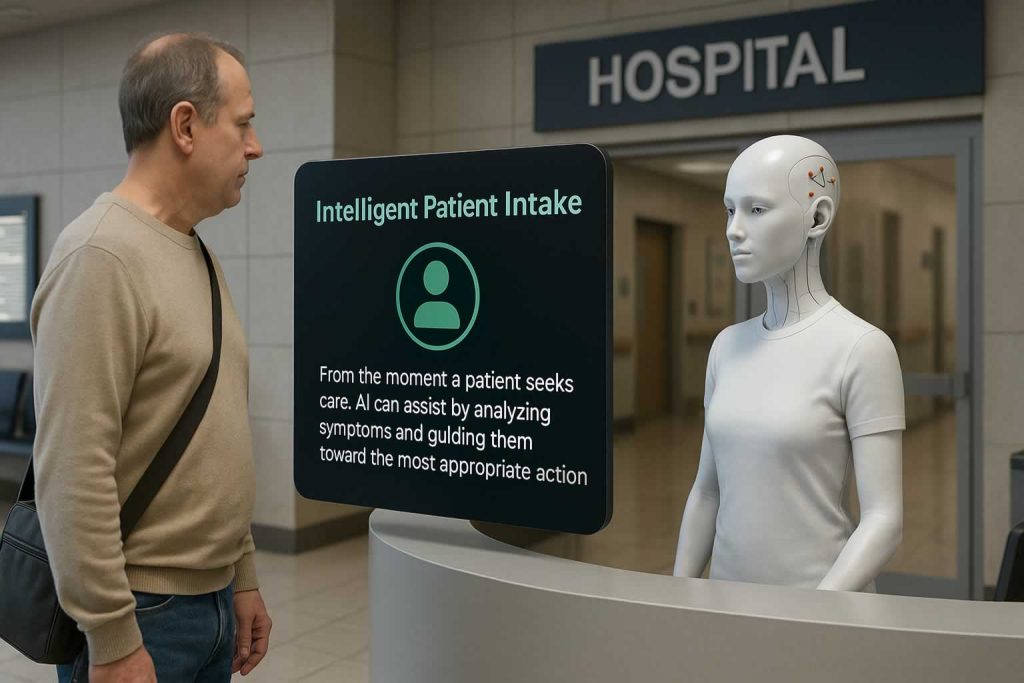
From the moment a patient seeks care, AI can assist by analyzing symptoms and guiding them toward the most appropriate action. Wemaxa’s virtual triage assistants ask relevant questions and identify urgency so that critical patients are seen quickly while others can be referred to telemedicine or home-based guidance. This improves care delivery and reduces unnecessary visits.
AI Documentation Handling

Doctors often spend as much time typing as treating. Wemaxa’s AI listens to conversations between clinicians and patients, then automatically generates structured medical notes. These notes follow clinical formats like SOAP and help keep records accurate while giving physicians more time to focus on care.
24/7 Patient Communication
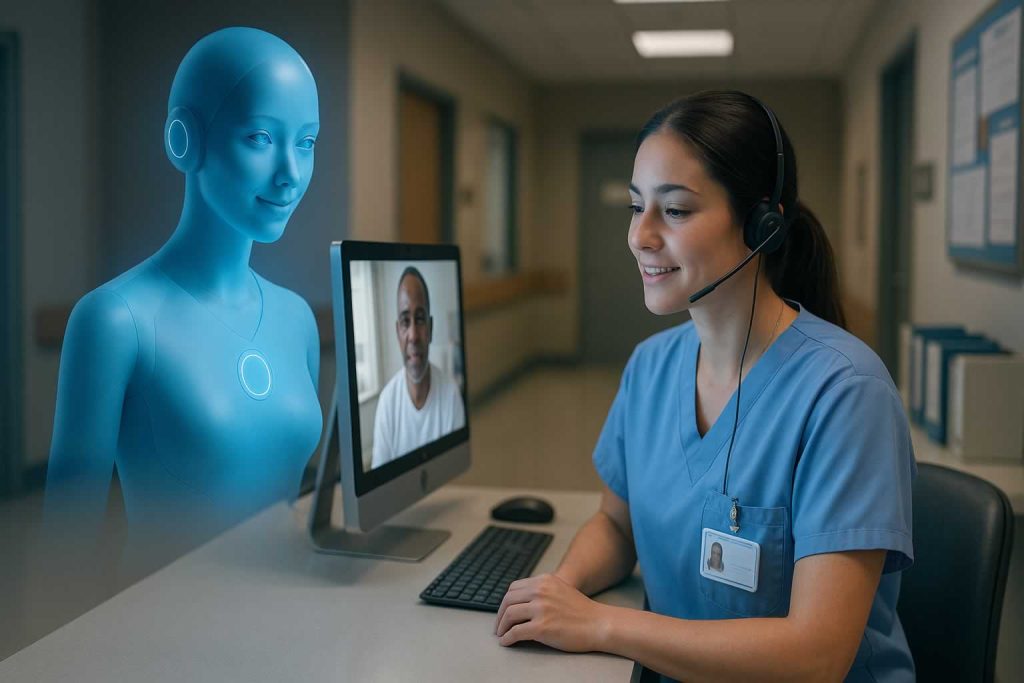
Not every patient concern needs a call back from the office. Wemaxa offers AI-powered chatbots that can answer routine questions about medication, scheduling, or recovery instructions. These bots work around the clock and keep your team available for the issues that truly require human attention.
AI Diagnostic Support
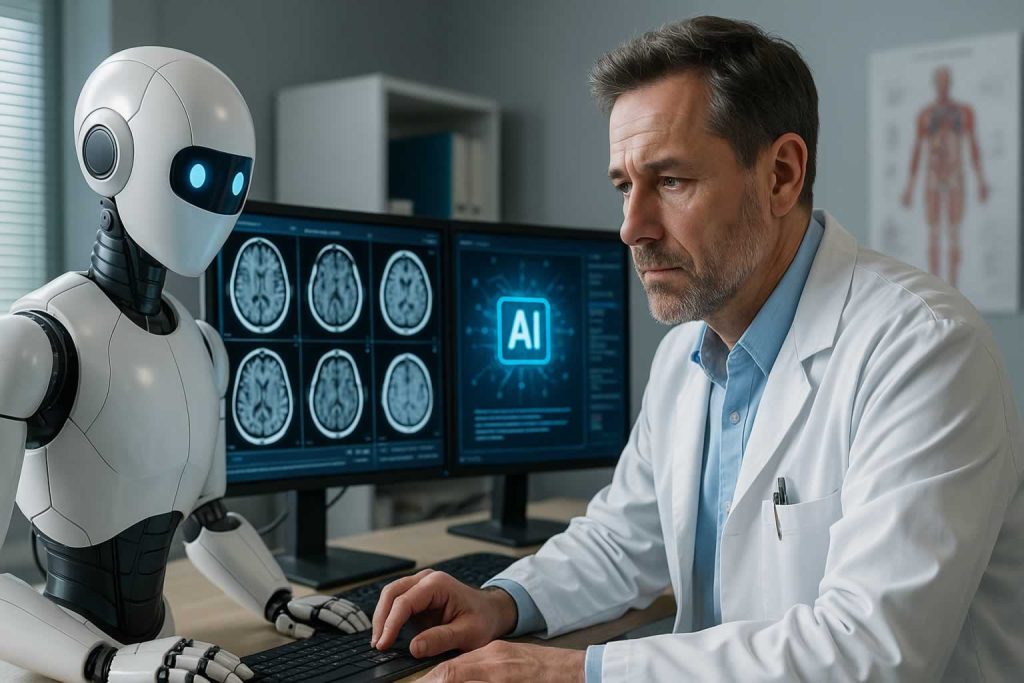
Modern healthcare involves a huge amount of data. Wemaxa uses AI to process imaging results, lab values, and health records to assist providers with decision-making. The AI doesn’t replace your judgment but adds data-driven suggestions for diagnoses and treatments so you’re working with more information, not less.
AI Predictive Scheduling
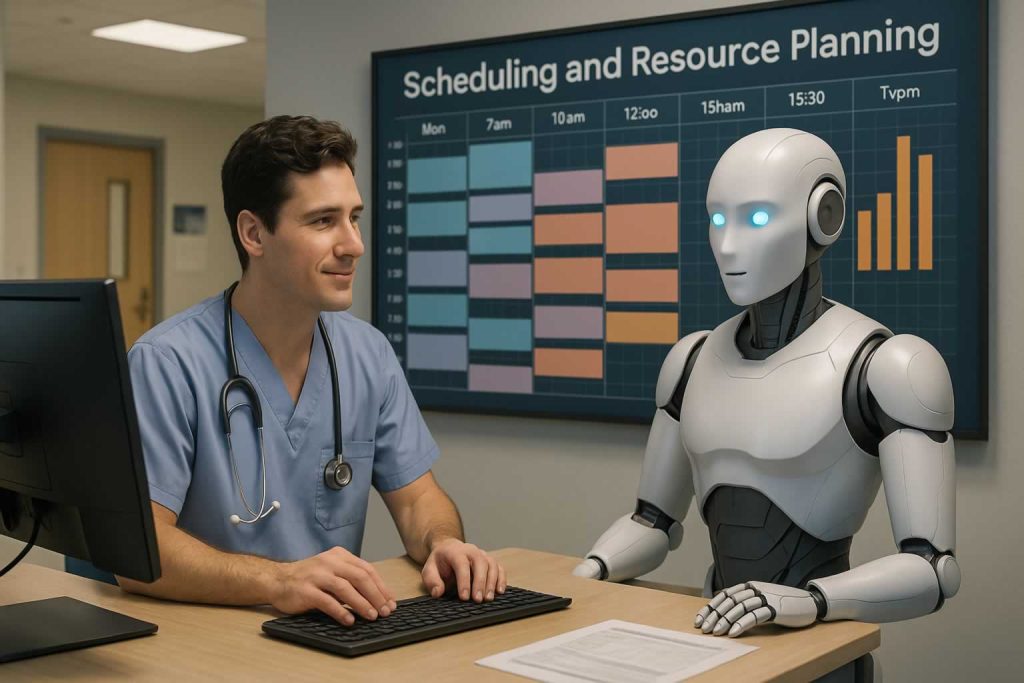
With the right data, AI can forecast how many patients are likely to visit on a given day, who might not show up, and how many staff members should be scheduled. Wemaxa’s predictive models help healthcare facilities manage time, reduce patient waiting, and ensure proper resource allocation with predictive scheduling.
AI Patient Engagement
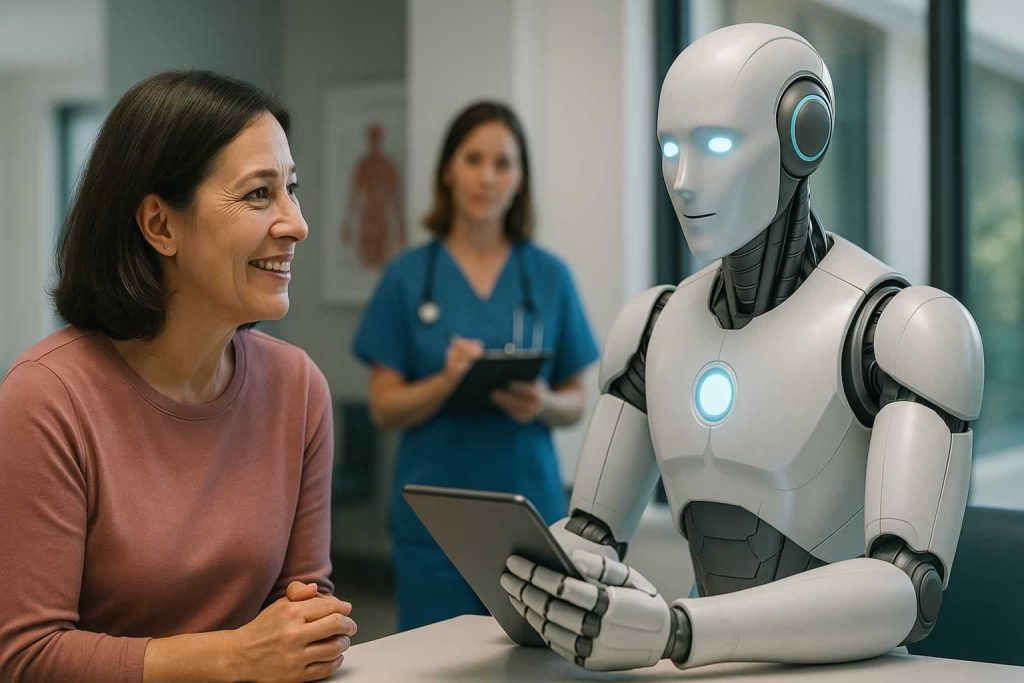
Every patient is different. Wemaxa’s AI learns from their medical history, preferences, and treatment plans to deliver personalized reminders and follow-ups. This increases compliance and builds trust, especially in managing long-term conditions or recovery and resource planning for personalized patient engagement.
Invisible AI Integration
AI tools can feel overwhelming if they aren’t designed with humans in mind. That’s why Wemaxa focuses on invisible integration. We build technology that works inside your existing EMR or EHR system without disrupting how your team operates. All our systems are designed to be secure, HIPAA-compliant, and fully customizable. Whether you need a triage assistant for your walk-in clinic or advanced analytics for a multisite hospital, we adjust to your scale and needs. Wemaxa is more than a software company. We are your long-term technology partner, focused on helping you deliver better care with fewer complications. Let’s build a smarter healthcare system together.
Emerging Areas Where AI Can Help Even More
- Remote patient monitoring
- AI-assisted billing and insurance claim automation
- Language processing to turn scanned documents and handwritten notes into searchable records
- Sentiment analysis of patient feedback to uncover hidden insights about satisfaction and service quality
- Predictive maintenance using IoT sensor data
- Fraud detection in healthcare transactions
- Virtual health coaching systems
MORE LINKS:
AI Integration in Healthcare Clinics
AI in healthcare is marketed as if the machines are on the verge of replacing doctors, when the reality is far less dramatic. What exists today is a collection of statistical tools deployed inside hospitals, clinics, and research labs, each performing narrow tasks with varying degrees of reliability. The rhetoric promises personalized medicine and automated diagnosis. The reality delivers algorithmic assistance that sometimes helps, sometimes misfires, and always raises questions about trust, liability, and data ownership.

The strongest foothold so far has been in medical imaging. Systems trained on vast libraries of scans can flag anomalies in X rays, MRIs, and CT images faster than overworked radiologists. The advantage is speed and consistency, but the risk is overconfidence. A model that mislabels a tumor is not just wrong, it is dangerous, and the accountability for that error is rarely clear. Doctors remain in the loop, but the pressure to lean on machine judgments grows as institutions chase efficiency.
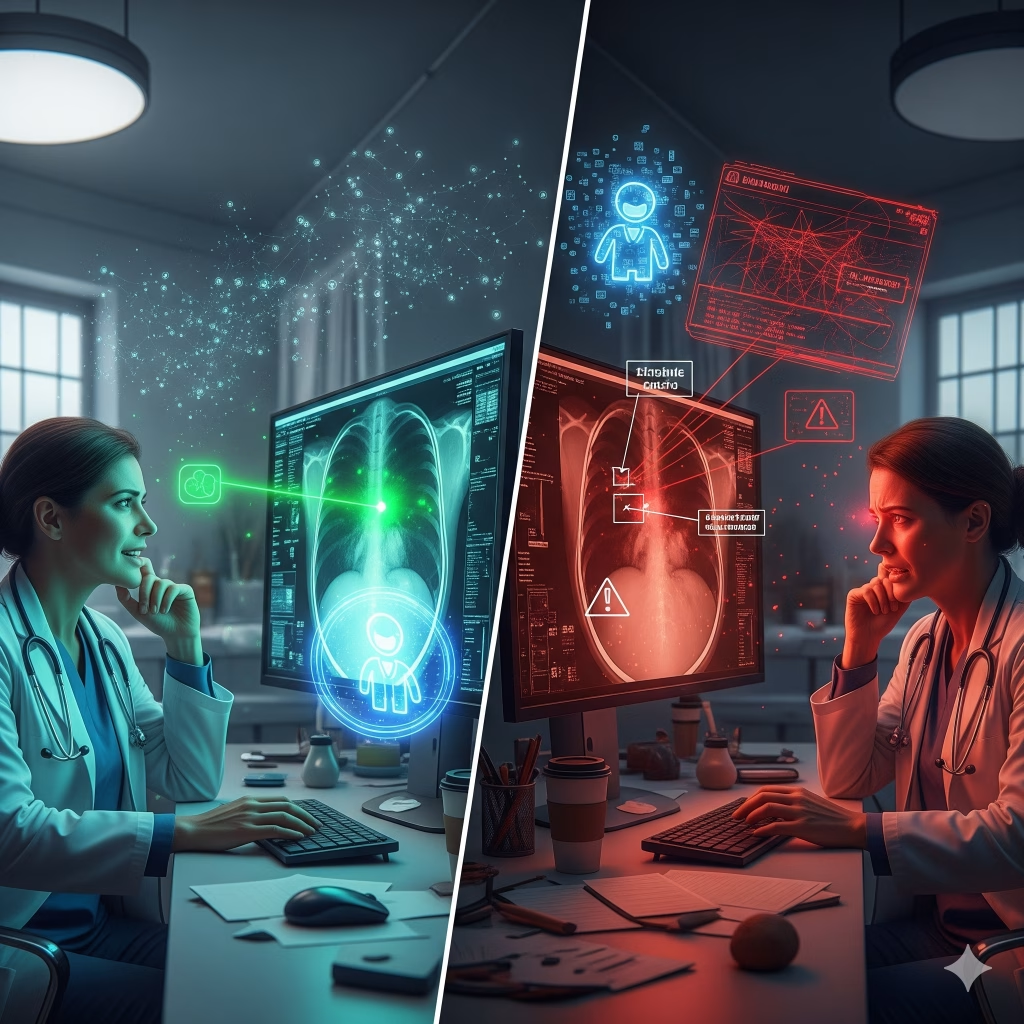
Another area is predictive analytics. Hospitals feed patient data into algorithms that forecast readmission risks, potential complications, or likelihood of disease progression. Insurers use similar tools to calculate costs and design coverage policies. Here the issue is not accuracy alone but bias. If the data reflects systemic inequalities, the algorithm amplifies them. A model that predicts poorer outcomes for certain demographics may simply be encoding historic neglect rather than medical reality. Drug discovery has become another showcase. AI tools sift through enormous datasets to identify promising compounds or model how molecules might interact with the human body. This accelerates the early stages of research, shaving years off traditional methods. Yet it does not eliminate the expensive clinical trial phase, nor does it guarantee safety. The pharmaceutical industry treats AI as a way to widen the funnel, not as a substitute for scientific rigor.
Administrative automation is the least glamorous but most pervasive use. AI sorts patient records, transcribes consultations, manages scheduling, and automates billing. This reduces paperwork and frees staff for clinical duties, but it also entrenches dependence on opaque systems. When an algorithm misfiles a record or rejects a claim, the consequences fall on patients and providers who rarely understand why the decision was made. Transparency remains elusive. So AI in healthcare is both promising and problematic. It enhances efficiency in imaging, logistics, and early research, but it does not replace human judgment. It introduces new risks tied to bias, security, and accountability. The industry sells it as transformation, but on the ground it functions more as augmentation. Machines expand capacity, humans remain responsible, and the system as a whole grows more complex rather than more intelligent.
We believe artificial intelligence is reshaping healthcare into something more responsive, efficient, and patient-centered. We help clinics, hospitals, and private practices move past the paperwork, delays, and guesswork by introducing AI where it matters most.
IMPLEMENT AI IN HEALTHCARE CLINICS
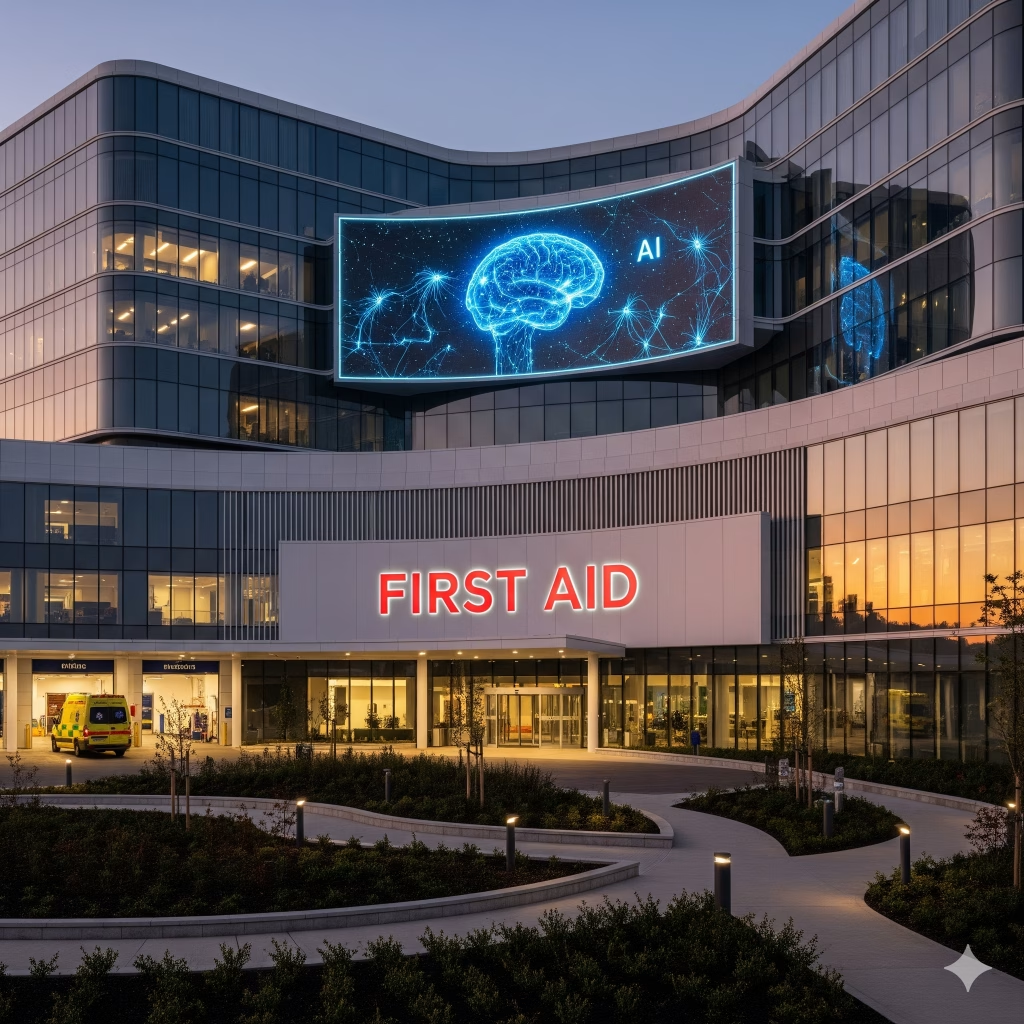
AI in healthcare is often advertised with glossy slogans that suggest a future where doctors become obsolete, yet the everyday reality remains far more modest. Current applications amount to carefully tuned statistical models deployed across hospitals, research labs, and insurance systems, where each algorithm is designed to perform a very specific task. These tools may provide insights that improve workflows, but they do not think, empathize, or reason in the way medical professionals do. Instead, they highlight the uneasy gap between technological ambition and clinical practice. For instance, companies that claim breakthroughs in personalized medicine often overstate the scope of what machine learning can achieve. The difference between spotting patterns in large datasets and guiding an individual patient’s treatment plan is not a matter of marketing it is a matter of scientific rigor, ethics, and accountability. Patients may be impressed by promises of automated diagnosis, yet the very same systems can misinterpret signals and introduce risks that multiply inside complex hospital environments.
The most visible progress has been in medical imaging, where AI models trained on massive archives of CT scans, X rays, and MRIs assist radiologists in identifying anomalies. The benefit here lies in speed and the ability to maintain consistency even when human specialists are fatigued. However, a misclassified tumor is not a statistical inconvenience but a potentially life-threatening error. The accountability for such mistakes is ambiguous, since manufacturers, software providers, and healthcare institutions each deflect responsibility. This tension raises not just clinical but also legal questions, as regulators struggle to determine whether algorithms should be treated like medical devices subject to rigorous approval processes. Organizations such as the FDA are only beginning to articulate frameworks for oversight, which means patients and physicians alike remain in uncertain territory when it comes to trusting these tools. The marketing machine sells reliability, but the lived experience is more cautious.
Beyond imaging, predictive analytics has emerged as a rapidly expanding frontier. Hospitals now deploy algorithms that forecast readmission risks, likely complications, or the progression of chronic illnesses. Insurers also lean heavily on predictive models to optimize costs and design coverage plans. The challenge here is not simply whether the algorithms are precise, but whether they replicate historical inequities. If the training data reflects decades of systemic neglect toward certain demographics, then the model essentially encodes bias into policy. This creates a cycle where technology amplifies inequality rather than correcting it. Scholars analyzing healthcare data ethics at Health Affairs argue that such predictive systems risk reinforcing socioeconomic disparities unless developers actively confront bias at the dataset and algorithmic level. What may look like an objective statistical forecast often hides the subjective decisions of those who built the system and those who choose what data to include or exclude.

Drug discovery has also become a showcase domain where AI promises to compress years of research into shorter cycles. By analyzing enormous molecular datasets, machine learning can identify compounds with therapeutic potential and predict their interaction with human biology. Platforms like Nature’s published research highlight examples of neural networks accelerating hypothesis generation. Yet enthusiasm must be tempered: these models do not remove the necessity of lengthy and expensive clinical trials, nor can they predict long-term side effects. Instead, pharmaceutical firms treat AI as a tool to widen the discovery funnel. It is less about replacing lab work and more about guiding researchers toward the most promising directions. Investors may herald breakthroughs, but inside laboratories the reality is incremental: a faster pace of hypothesis testing, not an overnight revolution.
On the administrative front, automation is perhaps the most widespread and least discussed use of AI in healthcare. Systems now sort medical records, automate billing, transcribe doctor–patient conversations, and optimize appointment scheduling. These tasks, while mundane, significantly affect patient experience and staff efficiency. Yet the convenience masks dependency on opaque software. If an algorithm incorrectly rejects an insurance claim or misfiles a patient’s record, the error can propagate through the system unnoticed until it harms someone directly. Unlike clinical misdiagnosis, these administrative errors rarely make headlines, but their cumulative impact on healthcare delivery is profound. Advocacy groups like Electronic Frontier Foundation raise concerns about how such automation erodes transparency and places decision-making in the hands of code that most patients and even staff cannot audit. The promise of efficiency coexists with the danger of unaccountable bureaucracy codified into machine logic.
Security and privacy form another critical dimension of this debate. Healthcare data is among the most sensitive information a person can share, and its digitization has already led to a surge in cyberattacks on hospitals and clinics. The integration of AI amplifies these risks because more systems now aggregate and process personal data at scale. A breach that exposes not only medical history but also algorithmic predictions about future health can have devastating personal and financial consequences. Institutions must navigate the thin line between leveraging data for better outcomes and protecting it from misuse. Reports from HIPAA Journal detail how compliance frameworks lag behind the rapid deployment of AI-driven platforms. Patients are often asked to trust opaque security assurances, yet the legal recourse in cases of misuse remains unclear, leaving a dangerous vacuum in responsibility.
Another overlooked element is the cultural shift within medical institutions. The push toward efficiency through automation has altered professional hierarchies. Doctors, nurses, and administrators now interact with systems that nudge their decisions, sometimes subtly undermining professional autonomy. For junior staff, reliance on AI outputs can create habits of deference to machines, while for senior staff it introduces conflicts over authority. This shift reflects a broader societal trend where algorithmic systems, whether in public policy or healthcare, gradually reshape the balance between human expertise and automated judgment. The outcome is not necessarily better decision-making but rather a new layer of complexity where human and machine roles blur in ways that few anticipated a decade ago.
Ultimately, AI in healthcare is not the story of replacement but of augmentation. Machines extend human capacity, speed up repetitive tasks, and introduce new forms of analysis, yet they also carry risks tied to bias, security, and accountability. The system grows more complex, not more intelligent, and the tension between marketing promises and clinical reality remains unresolved. For patients, this means understanding that the technology shaping their care is a tool, not a doctor. For policymakers, it means confronting questions of regulation, liability, and equity. And for the industry, it is a reminder that progress measured in algorithms and patents does not always translate into better patient outcomes. The narrative of transformation may attract investment, but the ground truth is slower, uneven, and often contradictory a mix of promise and peril that defines the current era of digital medicine.


